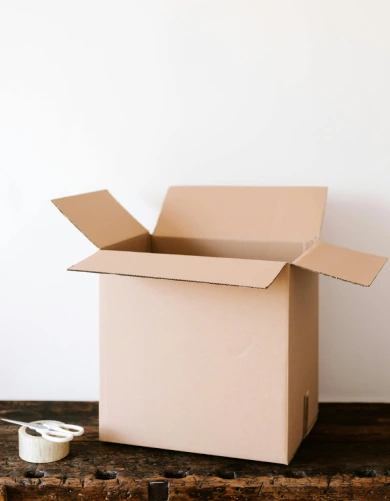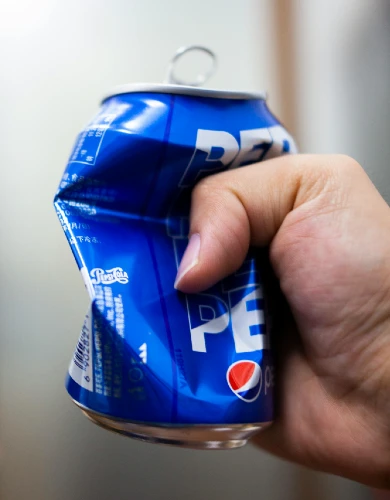Commercial waste management software: How it works, benefits, and choosing the right system
As the waste and recycling industry continues to embrace digital transformation, commercial waste management software has become an essential tool for operational success.
This guide explores how the right system can streamline processes for both waste firms and businesses that generate large waste volumes.
Here’s what we cover:
- What is commercial waste management software?
- How commercial waste management software works
- Types of commercial waste management software
- How commercial waste management software improves business performance
- How to choose the right waste management software
What is commercial waste management software?
Commercial waste management software is a digital platform that helps waste firms and large organisations track and optimise their waste operations. It replaces paper-based processes and spreadsheets with automated tools that manage collections, routes, and compliance data in one place.
By capturing real-time information from vehicles, weighbridges, and on-site, the software provides businesses with full visibility over how waste is generated, collected, transported, and recycled. This improves efficiency, reduces costs, and ensures compliance.
How commercial waste management software works
Here’s how waste management software uses automated data collection and smart analytics to make waste operations faster and more efficient.
Data capture and integration
Commercial waste management software relies on the automatic collection of data from a range of operational processes. Typical data feeds include:
- Collection data: The dates, times, locations, and waste types of collections as specified in commercial waste contracts.
- Bin RFID tags: Tags attached to individual commercial waste bins that automatically log collections.
- Weight data: Information captured by the weighing systems on waste vehicles and at weighbridges.
- Vehicle telematics: GPS and fuel consumption data from commercial waste vehicles.
Scheduling and route optimisation
The scheduling and routing function within commercial waste management software organises collections into the most efficient driving routes to save time and reduce fuel consumption.
Geographic Information Systems (GIS) map customer locations, while algorithms calculate the fastest and shortest routes using live traffic data.
GPS telematics information from waste vehicles is then used to monitor progress along planned routes, allowing real-time adjustments where necessary.
Customer and contract management
The customer and contract management function within waste software is a type of CRM system designed specifically to manage waste service customers.
The system maintains a database of all customers, storing the following key information:
- Business name, address, contact details, and site locations
- Account manager or sales contact
- Waste streams handled
- Bin/container sizes, quantities, and placement details
- Collection days and frequencies
- Contract start and end dates
- Agreed pricing and service level agreements (SLAs)
- Issued documents
The customer and contract management system integrates with collection scheduling and billing to automatically manage customers throughout the contract lifecycle.
Weighbridge and tonnage tracking
A commercial waste management system integrates with weighbridges and onboard vehicle scales to automatically record the weight of each collection and disposal.
These records are linked to individual customer accounts, providing accurate billing and detailed reports on recycling performance and landfill diversion.
Preparation of compliance documents
The reporting and compliance features use operational data to create documentation that meets commercial waste regulations.
A key function is the automatic generation of waste transfer notes from live collection and delivery data. Drivers or site operators can sign these digitally using a mobile device.
Once signed, waste transfer notes are automatically stored in a secure online portal for customers to access at any time.
Types of commercial waste management software
There are five distinct types of commercial waste management software, each designed to manage different commercial activities.
Commercial waste tracking software
Many large businesses use commercial waste tracking software to monitor and manage the waste produced across their operations.
The system helps them minimise commercial waste generation by tracking waste streams, monitoring recycling performance, and managing waste suppliers more effectively.
Operational waste management systems
Operational waste management systems are used by waste and recycling firms to manage and optimise their day-to-day operations.
The software streamlines waste collection, transportation, and disposal through features such as route planning, commercial waste bin tracking, billing, and compliance reporting.
Recycling and materials recovery software
Recycling and materials recovery software is used by disposal facilities involved in the recycling of waste.
The software enables these firms to track materials through the sorting, recycling, and resale processes. It typically includes features such as composition analysis, contamination tracking, and sales management.
Environmental Management Systems with waste modules
Environmental Management Systems support ESG and sustainability reporting goals for larger businesses by automatically calculating carbon emissions associated with different business activities.
Waste modules within these systems provide the automatic calculation of commercial waste emissions.
Hazardous waste tracking software
Hazardous waste tracking software is used by organisations such as laboratories and hospitals that handle or produce hazardous materials.
The software is designed to support the safe and compliant storage, transportation, and disposal of hazardous and clinical waste. It typically generates digital consignment notes and hazard labels.
How businesses use waste management software
Commercial waste management software benefits both waste management firms and businesses that generate large volumes of waste in their operations.
Here’s how different functions within these businesses use waste management software:
- Operations team – Assists recycling efforts and waste minimisation by providing analytical data on waste generation by type.
- Collection team – Improves day-to-day efficiency by generating optimised collection routes.
- Depot team – Automatically manages waste movements and weights at materials recovery facilities or other disposal centres.
- Customer service team – Provides live access to collection statuses and all associated customer records.
- Finance team – Automatically calculates and generates customer invoices for waste services.
- Management team – Displays real-time dashboards that monitor collection performance and recycling rates across the business.
Best use of commercial waste management software and supported waste types
Commercial waste management software serves specific purposes across different waste streams. Below, we summarise its role in managing three of the largest categories of collected waste.
General residual waste
General business waste refers to non-recyclable residual material collected from businesses, offices, or public spaces. Waste management software supports this process by:
- Tracking bin collections and weights per customer.
- Automating route scheduling for regular collections.
- Reporting tonnages for landfill diversion targets.
- Reporting tonnages to calculate the landfill tax.
Mixed recycling
Commercial dry mixed recycling services collect everyday recyclables such as paper, cardboard, plastic bottles, and aluminium cans. Waste management software supports this process by:
- Monitoring contamination rates via driver photo uploads.
- Providing recycling performance data for customers’ sustainability reports.
Once materials are segregated, the weights of commercial glass recycling and commercial cardboard recycling can be tracked through to downstream recycling or resale value.
Food waste
Commercial food waste collections are typically carried out for hospitality, catering, and other retail businesses. Waste management software supports this process by:
- Tracking segregated food collections and weights for anaerobic digestion processing.
- Monitoring compliance with the food waste obligations for businesses.
How commercial waste management software improves business performance
Commercial waste management software can enhance operational performance for both waste firms and their customers in three key ways:
- Cost efficiency and savings – Waste software provides analytics on waste generation volumes. Using this data, businesses and waste firms can adjust bin sizes and collection frequencies to minimise commercial waste collection costs.
- Improved operational control – Waste software offers real-time visibility of vehicle statuses and sends instant alerts for missed collections, contamination, and access issues.
- Data-driven decision-making – Waste software automatically delivers data analytics on waste and recycling performance, enabling benchmarking by site, contract, or customer.
How to choose the right waste management software
Selecting the right waste management software depends on the size of your operation, the types of waste you handle, and your overall business objectives.
Here are the key factors to consider when choosing commercial waste management software:
- Non-negotiable features – Map out your operational needs to create a list of essential features. Consider route optimisation, weighbridge integration, customer billing, and detailed recycling reports.
- System integration – Ensure that the waste software can seamlessly integrate with your existing accounting systems, telematics, and weighbridge equipment.
- Compliance – Check that the system supports UK legislation and compliance standards in any other countries where your business operates.

